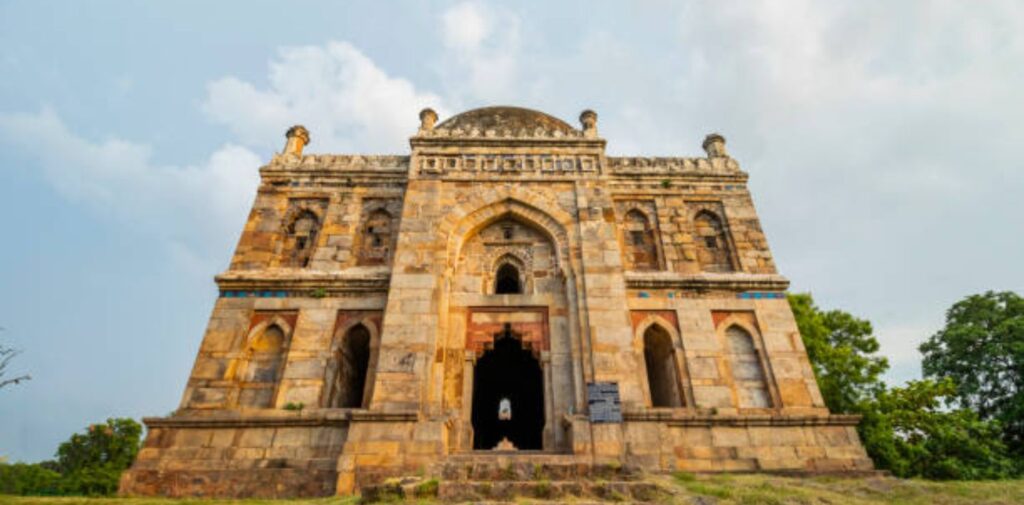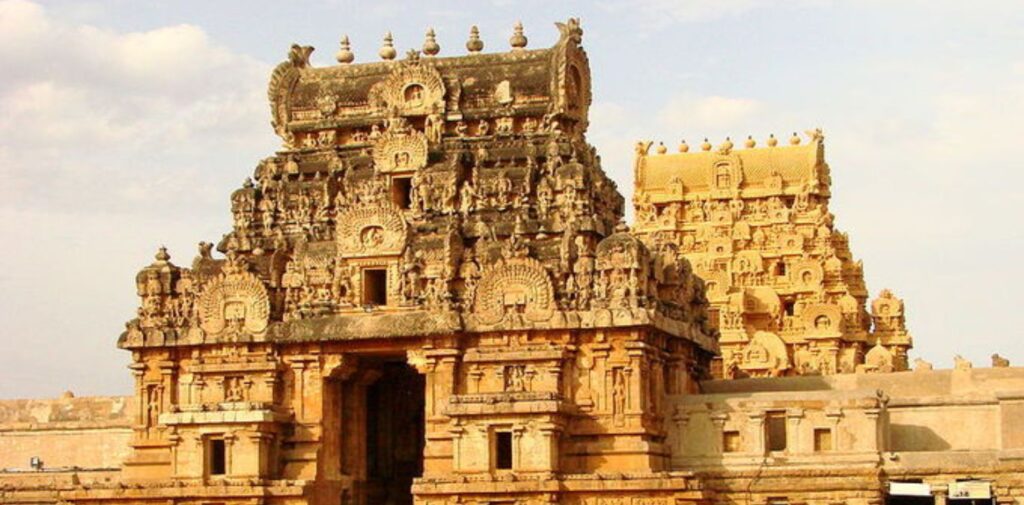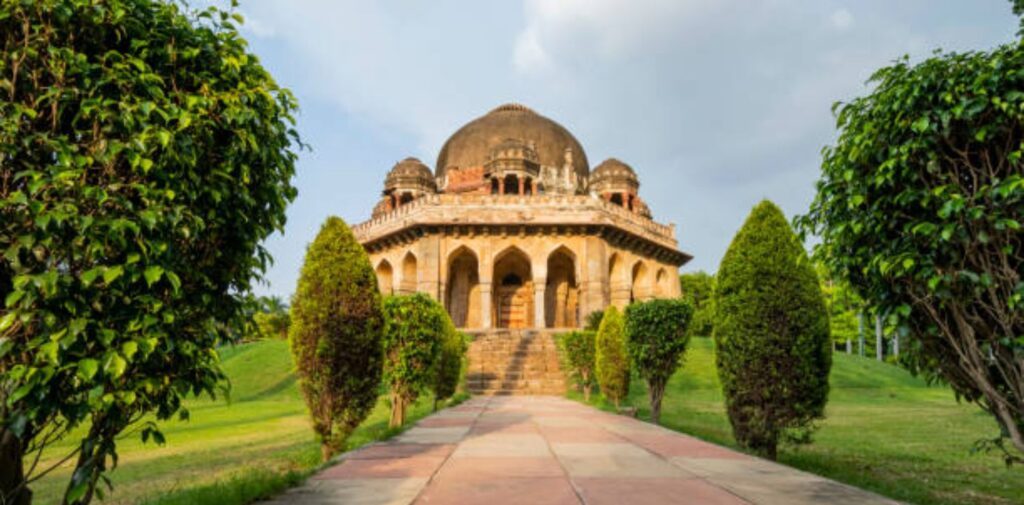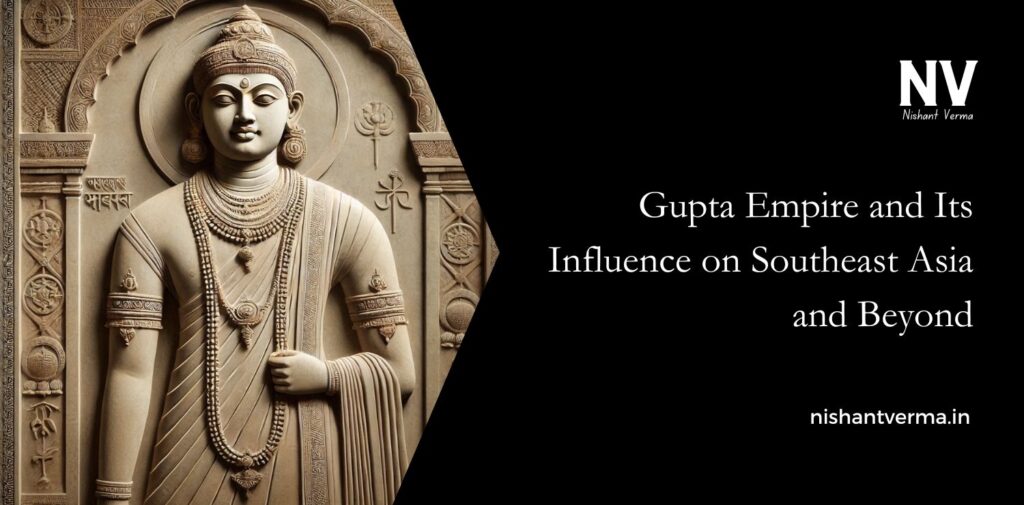The Gupta Empire, which flourished in India from around 320 CE to 550 CE, is often called the “Golden Age” of India. This was a time of great achievements in science, art, literature, and culture. Although the Gupta Empire was located in India, its influence spread far beyond the borders of the subcontinent. Southeast Asia and many other regions were greatly impacted by the ideas, culture, and innovations of the Gupta period. This article will explore how the Gupta Empire influenced Southeast Asia and beyond in simple terms.
The Gupta Empire: A Quick Overview
Before we understand the Gupta Empire’s influence, we should first learn a bit about the empire itself.
The Gupta Empire was founded by Chandragupta I in the 4th century CE. The most famous ruler of the Gupta Empire was Chandragupta II, who made the empire very powerful. The Guptas are remembered for their brilliant achievements in different fields, including:
- Science: They made important discoveries in mathematics and astronomy.
- Art and Literature: Beautiful sculptures, paintings, and famous literary works, such as Kalidasa’s plays, were created during this period.
- Religion: Hinduism, along with Buddhism, flourished during this period.
Now that we know a bit about the Gupta Empire, let’s look at how it influenced Southeast Asia and beyond.

The Spread of Indian Culture and Ideas
The Gupta Empire was not isolated from the world. Traders, travellers, and scholars from India interacted with people from far-off lands, including Southeast Asia. Over time, many of India’s ideas and culture began to spread to these regions.
Trade Routes
One of the biggest reasons for this cultural exchange was trade. The Gupta Empire was located at a very important crossroads of trade routes. Indian merchants travelled across the seas and lands to trade goods like spices, textiles, and precious stones with regions like Southeast Asia, China, the Middle East, and even Africa. Along with goods, ideas, religions, and art also travelled.
For example, the famous Silk Road trade route, which connected China to the Mediterranean, also passed through India. This route allowed ideas from the Gupta Empire to reach other parts of the world.
Religion: Hinduism and Buddhism
Religion played a significant role in the spread of Indian influence. Both Hinduism and Buddhism were important in Gupta times, and these religions travelled to Southeast Asia.
- Buddhism: Buddhism, which originated in India, was widely spread during the Gupta period. Missionaries and traders carried Buddhist teachings to Southeast Asia, where it was embraced by many kingdoms. The influence of Buddhism can still be seen today in countries like Thailand, Cambodia, Myanmar, and Vietnam. Monasteries, temples, and statues of Buddha became common sights in these regions.
- Hinduism: Hinduism also made its way to Southeast Asia, especially in the islands of Indonesia and Malaysia. Hindu kings and their kingdoms adopted Indian customs and religious practices, including building Hindu temples dedicated to gods like Vishnu and Shiva. The famous Angkor Wat temple in Cambodia, which was originally dedicated to the Hindu god Vishnu, is a prime example of Indian religious influence.

Indian Art and Architecture in Southeast Asia
Indian art and architecture also had a major impact on Southeast Asia during and after the Gupta Empire. Indian style in building temples, sculptures, and carvings was adopted by many Southeast Asian kingdoms.
- Temples: Indian-style temples, with their tall spires and beautiful carvings, were built in many places in Southeast Asia. In Indonesia, the Borobudur Temple is a famous example of Buddhist architecture that was inspired by Indian designs. Similarly, in Cambodia, the Angkor Wat temple, as mentioned earlier, shows the strong influence of Indian architecture.
- Sculpture and Carvings: The Gupta Empire is known for its amazing sculptures. These sculptures often depicted gods and goddesses, as well as scenes from Hindu and Buddhist mythology. Southeast Asian rulers started building similar sculptures, and they decorated their temples with carvings of Indian gods like Vishnu, Shiva, and Buddha.
- Influence on Art: Indian art, particularly the use of intricate designs and the style of depicting gods and nature, influenced art in places like Indonesia, Thailand, and Cambodia. Indian motifs and patterns can still be seen in many Southeast Asian temples and palaces.
The Influence on Language and Writing
The Gupta Empire also influenced languages and writing systems in Southeast Asia. In India, the Sanskrit language was widely used by scholars and rulers. This language became the foundation for many languages in Southeast Asia.
- Sanskrit Words in Southeast Asia: Many words in Southeast Asian languages, like those in Thailand, Cambodia, and Indonesia, are derived from Sanskrit. These words are often used in religious contexts, especially in Hinduism and Buddhism.
- Writing Systems: The Indian writing system, based on the Brahmi script, influenced the development of writing in Southeast Asia. The Khmer script used in Cambodia and the Thai script have their roots in ancient Indian writing.
Science and Mathematics: Gupta Contributions
The Gupta Empire made significant advancements in science, mathematics, and astronomy, and these ideas spread to Southeast Asia and other parts of the world.
- Mathematics: Indian mathematicians, like Aryabhata, invented the concept of zero and developed a decimal number system. This system was adopted by many cultures around the world, including those in Southeast Asia. It made calculations easier and more accurate. Many Southeast Asian scholars learned this system, which later spread to the Arab world and Europe.
- Astronomy: Indian astronomy was also advanced during the Gupta period. Indian scholars studied the stars and planets, and their knowledge reached Southeast Asia, where it influenced the understanding of time and seasons.

Political and Cultural Influence
The Gupta Empire also influenced the political systems and culture of Southeast Asia. Many Southeast Asian kings admired the wealth and power of the Gupta rulers and tried to model their kingdoms after the Gupta Empire. They adopted Indian-style governance, with kings ruling as powerful figures who were seen as divine. They also followed Indian customs in organizing their courts and armies.
- Indian-style Rulers: Southeast Asian rulers took Indian titles like Raja (king) and Emperor. They also adopted Indian customs of governance, where the ruler was seen as a protector of religion and culture.
- Cultural Festivals: Many festivals that are celebrated in India, such as Diwali (the Festival of Lights), were also adopted by countries in Southeast Asia. These festivals were either Hindu or Buddhist in origin but became part of the local culture.
Conclusion
The Gupta Empire, though located in India, had a powerful and lasting impact on Southeast Asia and beyond. Through trade, religion, art, science, and governance, the Gupta Empire helped shape the culture and history of many regions. The influence of India can still be seen today in the temples, languages, and festivals of countries in Southeast Asia.
The Gupta Empire’s Golden Age is a reminder of how ideas and cultures can spread across the world, leaving a legacy that lasts for centuries. Just like how the Gupta Empire influenced countries far from India, we can see how cultures around the world continue to inspire and learn from one another.




